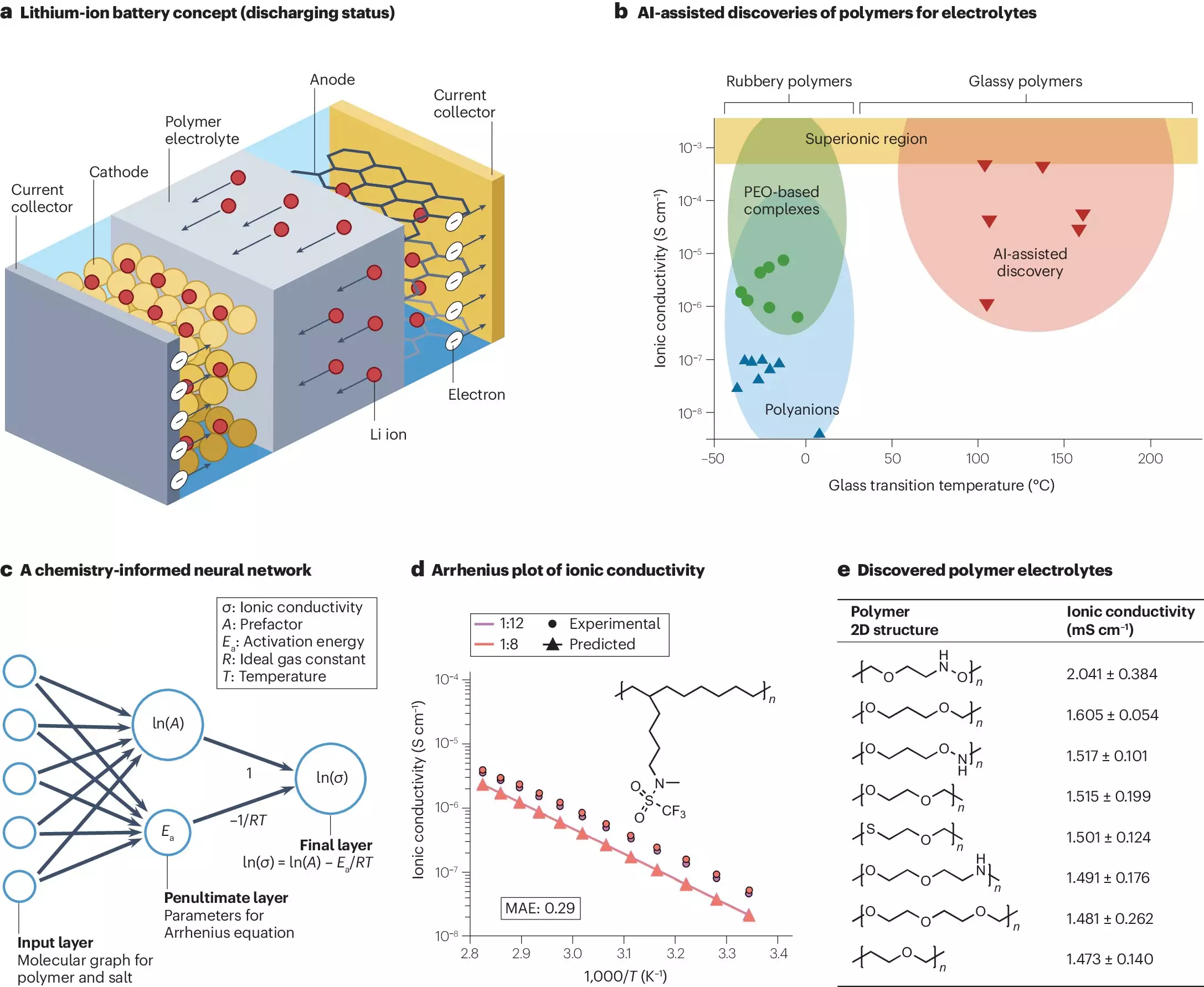Polymers are integral to modern technology, acting as the backbone of countless products and applications that enhance our daily lives. From the non-stick surfaces of Teflon cookware to the resilience of Kevlar in protective gear, these large-molecule compounds form an essential part of a myriad system. However, the quest for innovative polymers is an ongoing challenge, pushing the boundaries of materials science. In an exciting development, researchers at Georgia Tech are harnessing the power of artificial intelligence (AI) to redefine polymer discovery and development. Under the guidance of Rampi Ramprasad, the team is pioneering a transformative approach that intertwines advanced machine learning techniques with polymer informatics, leading to significant breakthroughs that promise to shape the future of materials engineering.
Recent publications in esteemed journals, including the Nature family, have highlighted the remarkable strides made through AI in advancing polymer science. One such study, presented in *Nature Reviews Materials*, outlines groundbreaking innovations across several critical application areas such as energy storage, filtration solutions, and sustainable plastics. In another pivotal paper featured in *Nature Communications*, the focus shifts towards the discovery of polymer subclasses specialized for electrostatic energy storage—an essential technology for modern electrical systems.
The advent of AI in materials science can be traced back over a decade, notably with the inception of the White House’s Materials Genome Initiative. Initially, research in this domain often stemmed from intellectual curiosity rather than practical application. However, recent years have witnessed a paradigm shift, with tangible achievements emerging from AI-driven methodologies. Ramprasad emphasizes that these advancements signify a turning point in how we perceive and develop materials, ushering in new possibilities for industrial research and development.
The methodology employed by Ramprasad and his team is intricate yet fascinating. It commences with a clearly defined target property or performance goal tailored to specific applications. Utilizing existing data sets on material properties, machine learning models are meticulously trained to predict desired outcomes. Furthermore, algorithms are designed to propose new polymers, projecting their characteristics based on the input data. The candidates meeting the established criteria are then subjected to real-world validation through laboratory synthesis and testing. This iterative feedback loop—where lab results inform and refine predictive models—not only accelerates discovery but also sharpens the overall accuracy of forecasts.
Although AI significantly enhances the pace of polymer discovery, it is not without obstacles. The reliability of AI predictions pivots on the quality and diversity of initial data sets, with comprehensive data being paramount for meaningful insights. Moreover, crafting algorithms that yield chemically realistic and synthesizable polymers poses a significant challenge. The real test lies not only in making predictions but also in validating whether these designed materials can be effectively produced and utilized in practical applications.
Collaboration is key in this transformative journey, with Ramprasad’s team working closely with various institutions to facilitate the production and testing of novel materials. Professor Ryan Lively from the School of Chemical and Biomolecular Engineering is among those who regularly partner with Ramprasad’s group, playing a vital role in translating theoretical models into experimental realities. Lively asserts that the machine learning frameworks developed by Ramprasad greatly expedite the exploration of new concepts, effectively guiding their research endeavors.
One of the most compelling case studies emerging from this collaborative effort revolves around the design of polymers for capacitors used in energy storage applications. Conventional capacitor materials have traditionally struggled to optimize both energy density and thermal stability concurrently. However, through the innovative deployment of AI, researchers have identified a novel class of insulating materials derived from polynorbornene and polyimide. These newly designed polymers are not only capable of achieving high energy density and thermal stability but are also adaptable for demanding applications like aerospace, all while adhering to environmental sustainability standards.
The industrial potential of AI-driven materials innovation is underscored by involvement from major corporate entities. The co-authorship of industry scientists from companies such as Toyota Research Institute and General Electric in the *Nature Reviews Materials* paper signifies a burgeoning interest in applying these groundbreaking discoveries to real-world manufacturing and development.
To further catalyze the adoption of AI in the materials sector, Ramprasad co-founded Matmerize Inc., a startup emerging from Georgia Tech. Their cloud-based polymer informatics software is making significant inroads, empowering companies across diverse domains—from energy to consumer goods—to design materials with unprecedented efficiency.
As we stand on the brink of a new era in polymer science, the collaborative efforts combining artificial intelligence with traditional materials science are proving to be not just academic exercises, but transformative agents poised to revolutionize the future of material development. The journey from theoretical models to practical applications remains essential, but with AI steering the helm, the future of polymers looks incredibly promising.

